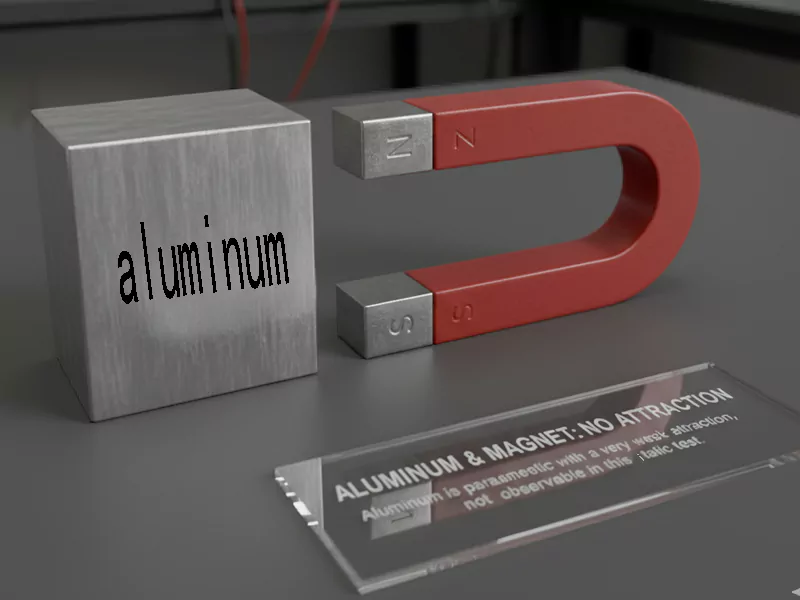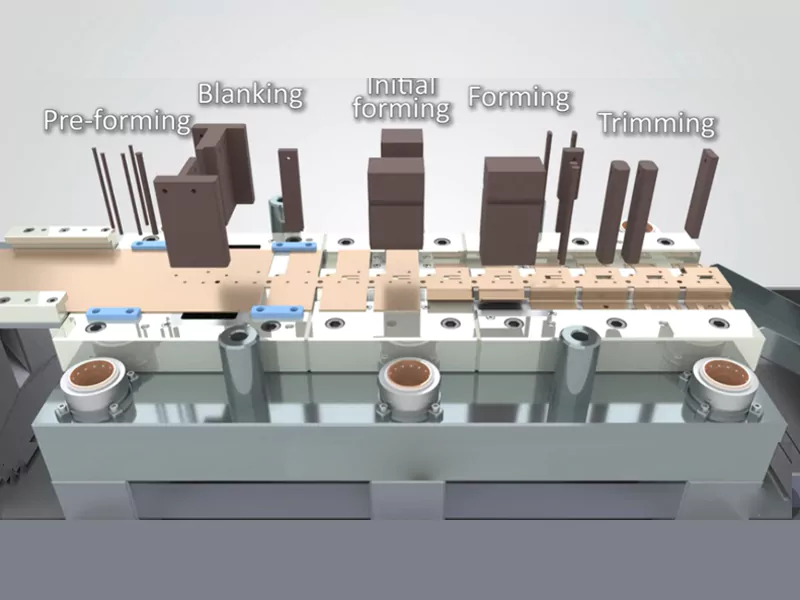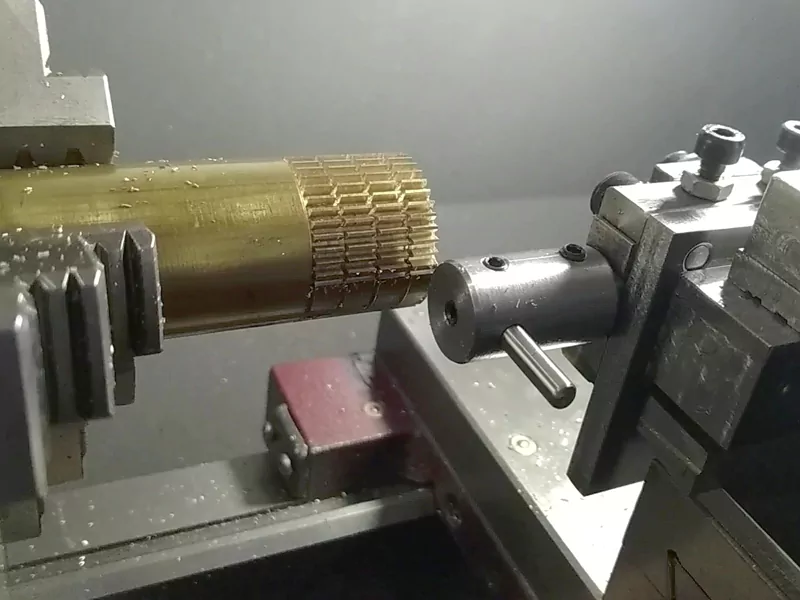You may ask, “Is aluminum magnetic?” The answer is no; aluminum is not magnetic, so magnets do not stick to it. Instead, magnets stick to iron or nickel, but not aluminum. While aluminum is a metal, not all metals behave the same way with magnets. Aluminum exhibits paramagnetic behavior, which means it reacts slightly to magnetic fields. Many people do not understand this property. Additionally, you will learn how eddy currents cause aluminum to react to changing magnetic fields.
Key Takeaways
- Aluminum is not magnetic. Magnets do not stick to aluminum. Magnets stick to iron or nickel instead.
- Aluminum has a weak reaction to magnetic fields. This is because it is paramagnetic. It reacts only a little and for a short time.
- Eddy currents happen in aluminum when a magnet moves fast nearby. These currents make a small magnetic push. They do not turn aluminum into a magnet.
- Aluminum is different from ferromagnetic metals. It cannot keep magnetism after the field is gone. Its magnetic effect goes away right away.
- Aluminum’s atomic structure stops strong magnetic effects. Its electrons do not line up for lasting magnetism.
- Aluminum is used in many industries. It does not mess with magnets. This makes it good for things that need magnetic neutrality.
- Aluminum can block changing magnetic fields. It helps protect sensitive electronics from electromagnetic interference.
- Knowing about aluminum’s properties helps us pick the right materials. This keeps technology and daily items safe and working well.
Table of Contents
Is Aluminum Magnetic?
Magnets and Aluminum
You might ask if aluminum is magnetic. If you put a magnet near aluminum, it will not stick. This can surprise people because aluminum is a metal. Most metals, like iron or nickel, are strongly attracted to magnets. Aluminum acts differently. Scientists say aluminum is a non-magnetic metal. You can try this at home. Put a fridge magnet on an aluminum soda can. The magnet will fall off every time.
- Aluminum does not pull magnets like iron or steel.
- If you move a magnet fast near aluminum, you may see a small effect. This happens because of eddy currents, not real magnetism.
- The reaction between aluminum and magnets is short and only happens when the aluminum moves.
Some people think aluminum dust sticks to magnets. But static electricity causes this, not magnetism. Sometimes, tiny bits of iron in aluminum can make a weak pull. Pure aluminum does not react to magnets.
Ferromagnetic vs. Paramagnetic
Why does aluminum only show weak magnetism? To answer, you need to know about ferromagnetic and paramagnetic metals.
Iron, Nickel, Cobalt
Ferromagnetic metals like iron, nickel, and cobalt have strong magnetic powers. These metals stay magnetic even after you take away the magnet. Their atoms have unpaired electrons that line up together. This makes magnetic domains. When they line up, you get a strong and lasting magnetic effect.
| Property | Ferromagnetic Metals | Paramagnetic Metals |
|---|---|---|
| Magnetization | Stay magnetic after the field is gone | Magnetism goes away when the field is gone |
| Response to Magnetic Field | Show strong magnetization and hysteresis | Get magnetized in a field, lose it after |
| Electron Spin Alignment | Unpaired spins line up in domains | Spins do not line up much; heat affects them |
| Spontaneous Magnetization | Exists without a magnetic field | Does not exist |
| Saturation Magnetization | High, can be measured in labs | Low, depends on field strength |
| Thermal Agitation Effect | Heat or force can mix up domains | Random motion wins when the field is gone |
Aluminum’s Weak Attraction
Is aluminum magnetic like iron or nickel? No, it is not. Aluminum is a paramagnetic metal. It only shows a weak and short response to magnetic fields. When aluminum is in a magnetic field, its electrons line up a little. When you take away the field, aluminum stops being magnetic right away.
You can see the difference by looking at these numbers:
| Material | Magnetic Susceptibility |
|---|---|
| Aluminum | +2.2×10−10 |
| Iron | 200000 |
| Nickel | 600 |
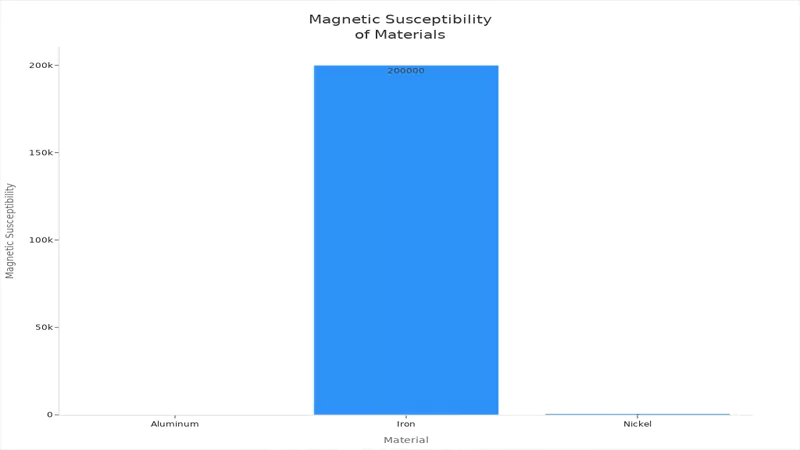
Aluminum’s magnetic susceptibility is much lower than that of iron or nickel. This means aluminum does not get strongly magnetized. The atoms in aluminum do not have unpaired electrons. Aluminum does not make magnetic domains. Aluminum will not keep any magnetism after you remove the field.
Tip: If you work in manufacturing, like at AFI Industrial Co., Ltd, remember aluminum does not act like iron or nickel with magnets. This helps you pick the right materials for magnetic jobs.
Is aluminum magnetic? Now you know it is not. Aluminum only shows a weak and short response to magnetic fields. Magnets do not stick to aluminum, and you cannot make them stay magnetic.
Why Not Magnetic?
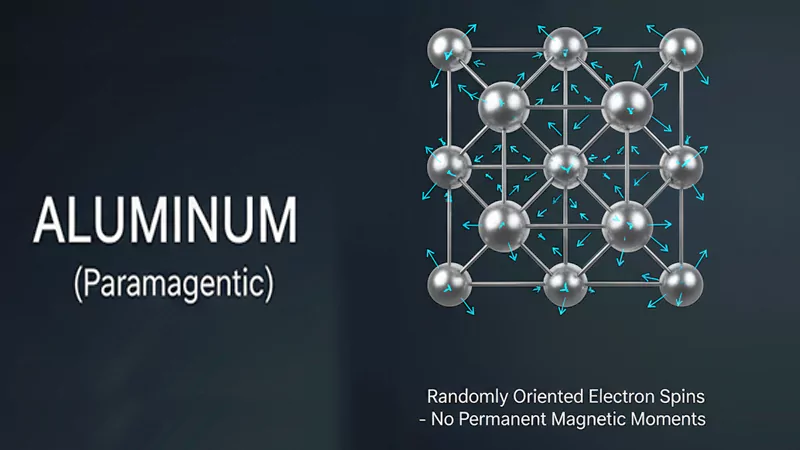
Atomic Structure
You might wonder why aluminum does not act like iron or nickel near a magnet. The reason is in how its atoms are arranged. Aluminum’s atoms do not allow strong magnetic effects to happen.
Electron Configuration
Let’s see what happens inside the atom:
- Aluminum is paramagnetic. It only has a weak pull to magnets.
- Its atoms do not let electrons line up with a magnetic field. This means there is almost no magnetic effect.
- When you put aluminum near a magnet, its atoms move a little to push against the field. This change is so tiny you will not notice it.
Aluminum’s electrons do not line up to make strong magnetism. Iron and nickel have unpaired electrons that line up easily. Aluminum’s electrons do not do this. If you work at AFI Industrial Co., Ltd, you will see that this makes aluminum good for jobs where you do not want magnets to affect things.
Crystal Structure
The crystal structure also matters for how aluminum reacts to magnets. Aluminum has a face-centered cubic (FCC) shape. This shape changes how it deals with magnetic forces.
Magnetic Alignment
Magnetocrystalline anisotropy in aluminum means its magnetic pull changes with crystal direction. For example, if the c-axis pull is bigger than the flat part, the crystal grows along the field. This can make magnetism stronger in some cases, but for aluminum, it stays very weak.
Let’s look at aluminum, iron, and nickel:
- Aluminum is non-magnetic.
- Iron and nickel are ferromagnetic. Their atoms’ spins line up with a magnet.
- In aluminum, atoms do not line up with each other or the field. Ferromagnetic materials line up because of exchange coupling, but aluminum does not.
Note: You will not see magnets stick to aluminum because its atoms do not line up with magnetic fields. This makes aluminum a good choice when you do not want magnets to stick.
Aluminum and Magnetic Fields
Paramagnetic Properties
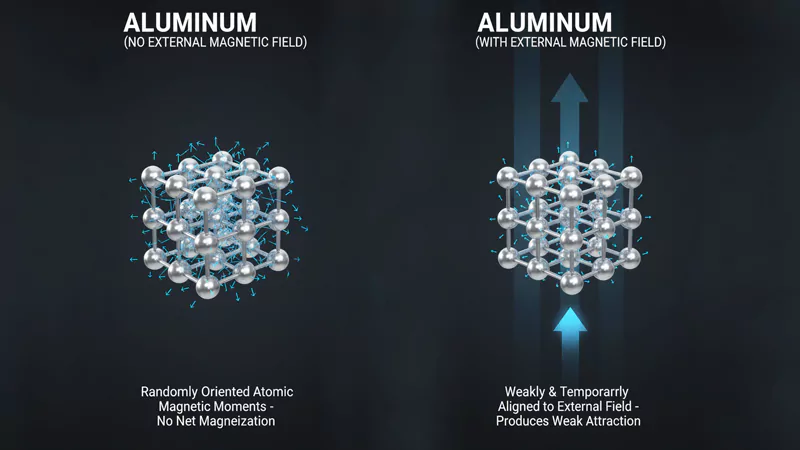
You might wonder what happens when aluminum is near a magnetic field. Scientists call this paramagnetic behavior. Paramagnetic materials react to magnets, but only a little and for a short time. You will not see a strong pull or any lasting change. Instead, there is a tiny attraction that goes away when you remove the magnet.
Paramagnetic materials like aluminum have unpaired electrons. These electrons make small magnetic moments. When you put aluminum in a magnetic field, these moments try to line up with the field. This lining up is weak and does not last long. You can compare aluminum to other metals in this table:
| Metal | Magnetic Susceptibility (SI units) |
|---|---|
| Aluminum | +2.2 × 10⁻⁶ |
| Other Paramagnetic Metals | 10⁻⁵ to 10⁻⁴ |
| Iron | 10³ to 10⁴ |
You can see that aluminum’s paramagnetic effect is much weaker than iron’s ferromagnetic effect. Even among paramagnetic metals, aluminum is at the lower end.
Note: In lab tests, aluminum’s paramagnetic effect gets a bit stronger at very cold temperatures. If you move aluminum through a magnetic field, it makes eddy currents. These can cause a quick magnetic push.
Weak Response
You might think all metals react strongly to magnets, but aluminum does not. Its response is so weak that you cannot see it without special tools. Here are some facts about aluminum’s paramagnetic response:
- Aluminum’s magnetic response is much weaker than that of iron or nickel.
- You only see a small attraction to magnets, much less than with ferromagnetic metals.
- Aluminum has some magnetic properties because of unpaired electrons, but these are very small and hard to notice.
Temporary Alignment
When you put aluminum in a magnetic field, its atomic moments line up a little. This effect goes away as soon as you take away the field. Scientists have studied this and found:
- Aluminum shows paramagnetism, so it is weakly attracted to magnets.
- The unpaired electrons in aluminum make tiny magnetic moments.
- When a magnetic field is present, these moments line up a bit, but only for a short time.
- The alignment disappears right away when you remove the field.
You can see these effects in labs:
| Condition | Magnetic Effect | Explanation |
|---|---|---|
| Movement in the field | Creates eddy currents | Makes a quick magnetic push |
| Cryogenic temperatures | Slightly stronger response | Raises magnetic susceptibility |
| Strong external fields | Weak temporary alignment | Still does not last |
If you work at AFI Industrial Co., Ltd, you know aluminum’s paramagnetic properties are useful when you need a metal that does not keep a magnetic charge. You can trust aluminum to stay non-magnetic, even in strong magnetic fields.
Misconceptions About Aluminum
All Metals Magnetic?
Lots of people think all metals are magnetic. You might read this in books or hear it from friends. But only a few metals are really magnetic. Most metals do not attract magnets at all. Look at the table below to see the difference:
| Type of Metal | Magnetic Classification |
|---|---|
| Ferromagnetic | Iron, Cobalt, Nickel |
| Paramagnetic | Weakly attracted metals |
| Diamagnetic | Weak repulsion metals |
Some people think shiny metals like copper or gold are magnetic. They look like iron, but shine does not mean a metal is magnetic. Copper and gold are shiny, but they do not stick to magnets. Aluminum is also non-magnetic. It does not act like iron, nickel, or cobalt.
Here are some myths you might hear:
- All shiny metals are magnetic.
- Aluminum cans stick to magnets.
- Aluminum can be magnetized like iron.
- All metals are magnetic.
- Aluminum foil blocks magnetic fields.
Only iron, nickel, and cobalt are truly magnetic. Most metals, like aluminum, do not attract magnets. AFI Industrial Co., Ltd uses aluminum for jobs where magnets must not interfere.
Tip: Try a fridge magnet to test a metal. If it does not stick, the metal is probably non-magnetic.
Why Magnets Don’t Stick
You may wonder why magnets do not stick to aluminum. The answer is in its atoms. Aluminum’s electrons are spread out evenly. This stops strong magnetic fields from forming. Iron and other ferromagnetic metals have unpaired electrons. These make magnetic domains. Magnetic domains help magnets stick.
If you put a magnet near aluminum, nothing happens. If you move the magnet fast, you might feel a tiny push. This is because moving magnets make eddy currents in aluminum. Eddy currents create a weak magnetic field that pushes back. This effect is short and does not last. Aluminum stays non-magnetic and cannot keep a magnetic charge.
Note: Aluminum does not block static magnetic fields. It only affects some electromagnetic waves. If you need a metal that does not mess with magnets, aluminum is a good pick.
Magnets do not stick to aluminum because of its electron setup and no magnetic domains. This makes aluminum helpful in many industries. AFI Industrial Co., Ltd uses aluminum when safety and performance need non-magnetic materials.
Eddy Currents in Aluminum
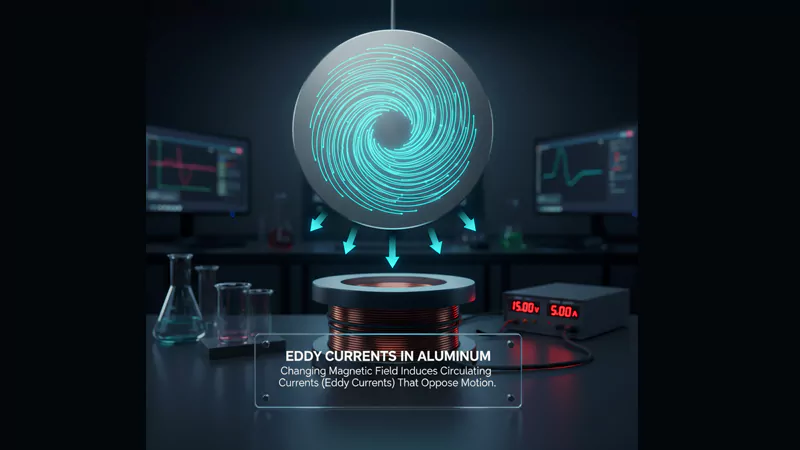
If you move a magnet near aluminum, something odd happens. Magnets do not stick to aluminum, but you might feel a small push if you move the magnet fast. This is because of eddy currents.
Lenz Effect
Eddy currents happen when a magnetic field changes near a conductor. Aluminum is a good example. Here is what goes on:
- Eddy currents are loops of electric current inside aluminum when the magnetic field changes.
- Faraday’s law of induction explains this. When the magnetic flux in aluminum changes, it makes an electromotive force (emf).
- These currents flow in circles, always at a right angle to the magnetic field.
This causes the Lenz Effect. The Lenz Effect means the new currents make their own magnetic field. This field pushes against the change that made them. You can see this with a simple test. Drop a magnet through different tubes and watch the time:
| Tube Material | Fall Time (s) |
|---|---|
| Aluminum | 20.95 |
| Copper | 21.56 |
| Plastic | 0.45 |
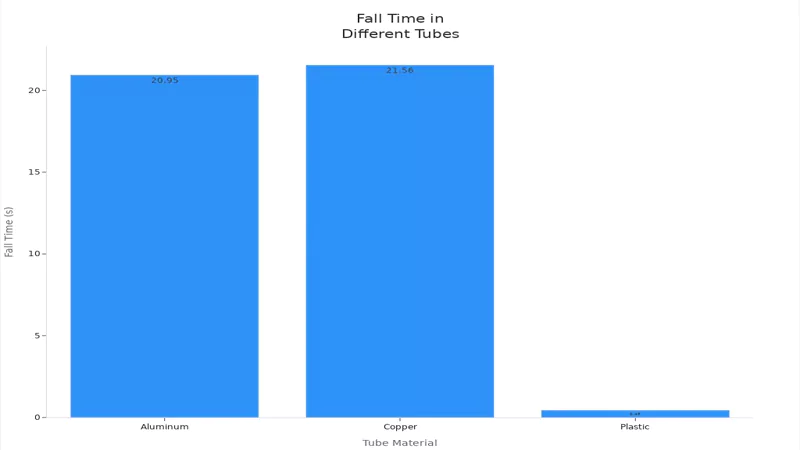
The magnet drops much more slowly in aluminum than in plastic. Eddy currents in aluminum make a force that slows the magnet down. This is the Lenz Effect at work.
Magnetic Braking
Eddy currents are used in many real-life ways. One big use is magnetic braking. If you want to slow something down fast and smoothly, you can use aluminum and strong magnets.
Real-World Uses
You can find magnetic braking in many places:
- Safety brakes on roller coasters
- Elevators
- Rail systems
Roller coasters use strong magnets and aluminum fins to slow cars safely. When the aluminum fin moves through the magnetic field, eddy currents start. These currents push back, slowing the car without touching it. This makes the stop smooth and safe.
Elevators and trains use magnetic brakes with aluminum discs or arms. When these spin into a magnetic field, eddy currents form. The currents push against the motion, making it safe and easy to slow down heavy things.
Scientists have tested different aluminum alloys. They found that disc thickness, air gap size, and magnet strength all change braking power. Thicker discs and smaller air gaps make the brakes stronger. Engineers at AFI Industrial Co., Ltd use this to make safer and better brakes.
Tip: Magnetic brakes do not wear out as fast as regular brakes. This makes them a smart pick for things that need to last a long time.
Special Cases
Can Aluminum Be Magnetized?
You might wonder if aluminum can ever be magnetized. Aluminum does not become magnetic forever, even with strong magnetic fields or very cold temperatures. You will only see a weak magnetic effect when the field is there. The effect goes away right after you remove the field.
- Aluminum cannot keep magnetism like iron or nickel.
- Strong magnetic fields can make aluminum react for a short time, but it stops quickly.
- When it is almost at absolute zero, aluminum’s paramagnetic effect gets stronger. Scientists use this in superconductivity research. Aluminum helps them learn about magnetic interactions.
Tip: If you work with magnets and metals, remember aluminum never stays magnetized. You can use it safely where permanent magnetism would be a problem.
Effect of Aluminum on Magnetic Field
Aluminum changes how magnetic fields act around it. When a magnetic field changes near aluminum, eddy currents form inside the metal. These currents happen because of electromagnetic induction.
- Eddy currents in aluminum make their own magnetic fields. These push against the first magnetic field.
- This push makes the magnetic field weaker near the aluminum.
- Aluminum can work as a magnetic shield. The currents lower the effect of outside magnetic fields. This protects sensitive equipment.
| Effect | Description |
|---|---|
| Eddy Currents | Loops of current oppose changes in the magnetic field |
| Damping | Weakens the original magnetic field |
| Magnetic Shielding | Reduces external field influence |
Note: You can use aluminum to protect electronics from unwanted magnetic effects. This makes aluminum useful in labs and factories.
Industrial Applications
Aluminum’s reaction to magnetic fields is used in many industries. Engineers use these properties to fix real-world problems.
- Aluminum changes how brakes and cutting tools work. This gives smoother and safer results.
- High tension power lines use aluminum alloy coatings. These coatings help with strength and heat, especially where magnetic fields touch the wires.
- Electromagnetic casting uses a magnetic pressure field made by an alternating current coil.
- Eddy currents form in the melted aluminum and mix with magnetic fields to make Lorentz forces.
- This process makes better aluminum ingots by removing mold problems.
Aluminum’s paramagnetic property lets you use it in sensitive electronics and transport systems. You can keep things non-magnetic, which is important for data safety and safe use. Recent studies show that a magnetic field on 5083 aluminum alloy makes it resist corrosion better. The magnetic field makes the protective layer stronger, so aluminum lasts longer in tough places.
AFI Industrial Co., Ltd uses these new methods to make strong products for cars, electronics, and buildings. You get the benefits of aluminum’s special reaction to magnetic fields in everyday technology.
Summary
Key Points
Aluminum does not act like iron or nickel near magnets. It is paramagnetic, so it only reacts a little and for a short time. Magnets will not stick to aluminum. You cannot make aluminum stay magnetic forever. Its atoms and crystals stop strong magnetism from happening. Aluminum is different from ferromagnetic metals.
| Metal | Magnetic Property | Conductivity |
|---|---|---|
| Aluminum | Non-magnetic (paramagnetic) | Good conductor of electricity |
| Iron | Ferromagnetic | Moderate conductor |
| Nickel | Ferromagnetic | Good conductor |
| Copper | Paramagnetic | Excellent conductor |
Aluminum is special because it lets electricity flow well but does not pull magnets. Iron and nickel can keep magnetism. Copper is also paramagnetic and conducts electricity even better than aluminum. Knowing this helps you pick the best metal for your work.
Tip: If you want a metal that does not mess with magnets, aluminum is a good pick. AFI Industrial Co., Ltd suggests aluminum for jobs needing magnetic neutrality.
Everyday Impact
Aluminum’s non-magnetic property helps you every day. It is useful in places where magnets could cause trouble.
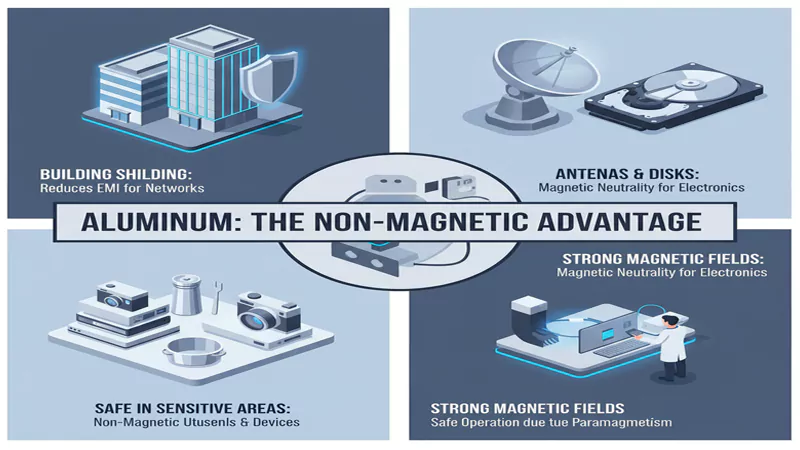
- Aluminum lowers electromagnetic interference in buildings. Your network and security systems work better because magnets do not stick to aluminum.
- You see aluminum in things like kitchen tools and cameras. These items stay safe in sensitive places.
- Aluminum does not attract magnets, so it works well for antennas and computer disks. Magnetic neutrality keeps electronics working right.
- Its paramagnetic nature lets aluminum work safely where strong magnetic fields might be a problem.
Aluminum is used in cars, buildings, and electronics. Engineers at AFI Industrial Co., Ltd use aluminum to make products that avoid magnetic problems. You get safer roller coasters, elevators, and better protection for electronics.
Note: Picking aluminum helps keep your equipment safe from unwanted magnetic forces. It also makes your space safer and more efficient.
Aluminum’s special reaction to magnets gives you real benefits every day. You can count on aluminum to work well without magnetic issues.
Aluminum does not pull magnets. Magnets stick to iron or nickel, but not aluminum. Aluminum is paramagnetic, so it reacts weakly and only for a short time to magnetic fields. Ferromagnetic materials keep strong magnetism. Paramagnetic materials lose magnetism quickly. The Lenz Effect helps aluminum work with changing magnetic fields in cool ways:
- Magnetic braking slows down a magnet falling in an aluminum pipe.
- Induction sorting helps recycling plants separate aluminum.
| Material Type | Applications |
|---|---|
| Ferromagnetic | Used in data storage, electric motors, and permanent magnets |
| Paramagnetic | Used in MRI machines and as catalysts |
Keep these facts in mind when picking materials for technology or everyday things.
FAQ
Magnets do not stick to aluminum. Aluminum is paramagnetic. It only reacts a little and for a short time. Aluminum does not have magnetic domains like iron or nickel.
You cannot make aluminum stay magnetic forever. Strong magnetic fields give a short effect. Aluminum loses magnetism right after you take away the field.
Aluminum does not block static magnetic fields. It can shield against changing magnetic fields. Eddy currents help protect sensitive electronics from these fields.
You can use aluminum safely near magnets. It does not attract magnets or keep magnetism. AFI Industrial Co., Ltd suggests aluminum for jobs needing magnetic neutrality.
Eddy currents are loops of electric current inside aluminum. They happen when a magnetic field changes quickly. These currents make a force that pushes against the change.
You find aluminum in magnetic brakes and recycling machines. It is also used in some electronics. Engineers use aluminum to slow-moving parts and protect devices from magnets.
Aluminum helps shield electronic devices from electromagnetic interference. You see it in computer cases, cables, and antennas. This keeps your equipment working well.


